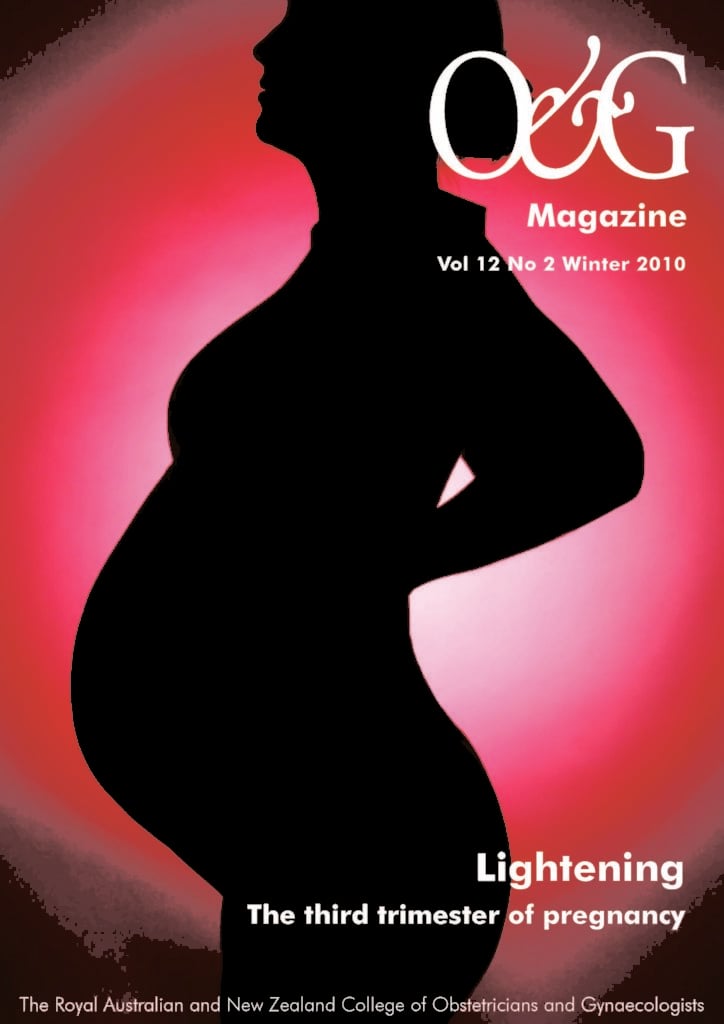A corollary to the recent edition of O&G Magazine, ‘Obstetrics: art or science?’1, is that obstetrics is replete and at the same time enriched by its own archaic terminology. The term ‘lightening’ is one such quaint term, yet it quintessentially symbolises the third trimester in the same way that the second trimester was branded by ‘quickening’ in the corresponding edition of O&G Magazine.2
‘Lightening’ for the Latin scholars is the DRANZCOG gerund derived from the verb ‘to lighten’, which means ‘to make less heavy’. So applied to obstetrics, lightening means ‘…the sensation, experienced by many women late in pregnancy when the head of the fetus enters the pelvis, of a reduction in pressure on the diaphragm, making it easier to breathe.’3 I have been unable to determine the origin of its use in midwifery and obstetrics, but I do remember in the ‘olden days’ before our practices were dictated to by ultrasonography, emblazoned on the antenatal cards were the terms ‘quickening’ and ‘lightening’. In the attached boxes we could affix the relevant dates, which helped to estimate the dates of confinement for our more forgetful patients.
It has always been taught that in the primigravida lightening occurs at 36 weeks, which we all know from our practices is not true. Weeks and colleagues4 suggested that in the majority of primigravidae, the fetal head does not engage between 36 and 38 weeks, but more importantly, that in 80 per cent of patients, the engagement-delivery interval was less than 14 days.
‘Lightening’, however, is truly an oxymoron, for in the expectant mother, it heralds an increase in burden in many other ways from pelvic and back discomfort to the mother of all burdens – labour. Likewise, for the obstetrician, the third trimester is the ‘business end’ of the pregnancy and with it comes more problems than in the rest of the pregnancy – there is certainly no lightening of burden here. To ease the load, we have assembled a number of very interesting and challenging articles from diverse areas such as metformin use in gestational diabetes; the perennial problem of the management of PPROM; the caesarean scar; and the prolonged pregnancy. As always, we would like to thank all authors for their generous donation of their time and words of wisdom.
References
- O&G Magazine, Vol 11 No 4 Summer 2009.
- O&G Magazine, Vol 11 No 2 Winter 2009.
- Collins English Dictionary. 2003.
- Weeks ARL, et al. British Journal of Obstetrics and Gynaecology 1975; Volume 82 (1) p7-11.






Leave a Reply